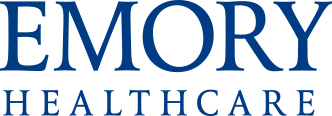Other Ways to Get De Quervain’s Tenosynovitis
Kate sees this condition most commonly with parents during the first six months of their baby’s life. But anyone who does repetitive tasks can get De Quervain’s tenosynovitis.
“It’s a condition caused by overuse,” says Kate. “It can happen to anyone who repeatedly uses their thumb, for example to lift or grip. It can affect construction workers, musicians or surgeons.” Even texting or scrolling on your phone can contribute to the condition.
Treatments for De Quervain’s Tenosynovitis
“It’s important to meet patients in the moment,” says Kate. “Everyone has their own goals, and their pain interferes differently with their lives.”
First it helps to identify which actions cause the pain so patients can do them more carefully. Kate recommends patients try anti-inflammatory medicine to soothe the tendons. A brace and hand therapy exercises can also help. If the pain persists, she recommends steroid injections.
If those treatments don’t relieve the pain, surgeons can perform De Quervain’s release surgery. It opens up the tendon sheath so the tendons can glide more freely. After the outpatient procedure, patients go home the same day.
Carmen’s Advice for Other Parents
 Once Carmen started talking about her pain, she noticed many parents say, “I’ve had that, too!” Carmen thinks it may be another aspect of parental “silent suffering.” She recommends parents, especially moms, talk to their providers about any pain or issues.
Once Carmen started talking about her pain, she noticed many parents say, “I’ve had that, too!” Carmen thinks it may be another aspect of parental “silent suffering.” She recommends parents, especially moms, talk to their providers about any pain or issues.
“I can’t believe I woke up like a vampire in a crypt for months. Don’t wait until it gets to that point to see a provider!”
Now her wrists are pain-free, and Carmen wants to keep them healthy. “I keep my wrists straight instead of bent when I hold my baby and nurse her.” She rests if she feels stiff and gives her relatives and friends a turn to hold her baby whenever she can. She also strengthens her forearms and stretches her wrists with exercises to prevent the pain from returning.
A physical therapist can teach you exercises to prevent pain. Exercises for De Quervain’s tenosynovitis improve the movement and strength of the thumb and wrist. Common exercises may include these movements, which start with the hand in the position of a handshake:
- Thumb extension: Lift the thumb up and away from the hand in a scissor motion.
- Thumb abduction: Pull the thumb away from the palm.
- Thumb flexion: Reach your thumb across the palm to touch under the pinkie; bring the thumb down toward the palm.
- Ulnar deviation of the wrist: Bend the wrist to point the entire hand toward the floor.
Find Care for Your Wrist or Thumb Pain
The specialists at Emory Orthopaedics & Spine Center diagnose and treat a wide variety of bone, joint and muscle conditions.
“We are a tight-knit group of providers who work toward the common goal of getting our patients back to the activities they enjoy,” says Kate. “Our approach continues from the front desk to the providers to check-out.”
Make an appointment online or call 404-778-3350 for more information.


 Kate noticed how Carmen’s condition affected her daily life. “We discussed her need to feel comfortable in her job as a surgeon,” Kate says. “But pain also limited Carmen’s ability to lift her child and perform daily tasks around the house.”
Kate noticed how Carmen’s condition affected her daily life. “We discussed her need to feel comfortable in her job as a surgeon,” Kate says. “But pain also limited Carmen’s ability to lift her child and perform daily tasks around the house.” Once Carmen started talking about her pain, she noticed many parents say, “I’ve had that, too!” Carmen thinks it may be another aspect of parental “silent suffering.” She recommends parents, especially moms, talk to their providers about any pain or issues.
Once Carmen started talking about her pain, she noticed many parents say, “I’ve had that, too!” Carmen thinks it may be another aspect of parental “silent suffering.” She recommends parents, especially moms, talk to their providers about any pain or issues.

